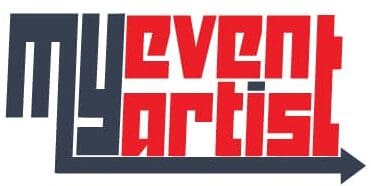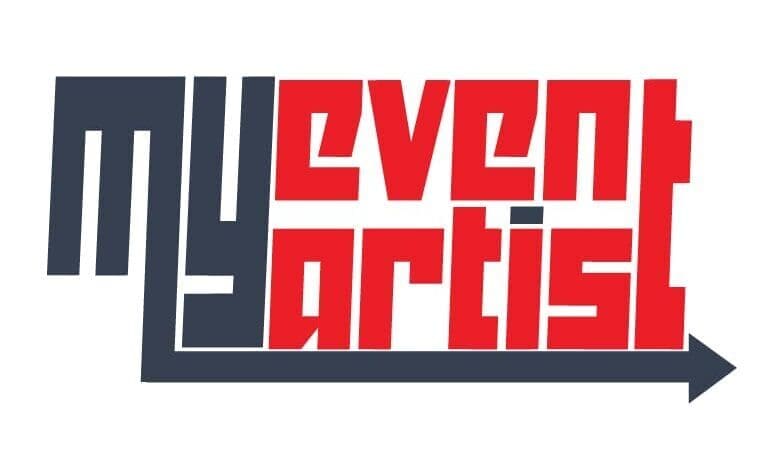Creating a standout logo for a sports team or event often begins with a concept, many times illustrated through hand-drawn sketches. These sketches capture the essence of your design ideas, laying a foundation for what could become a memorable logo. The next crucial step is transforming these sketches into clean, scalable vector graphics using Adobe Illustrator.
At My Event Artist, we specialize in helping event organizers, teams, and apparel businesses create distinctive logos that stand out in the sporting industry. This detailed guide focuses on the process of vectorizing hand-drawn sketches specifically for sports logos, equipping you with the knowledge and techniques necessary to elevate your designs.
Understanding the Value of Vectorization
1. Scalability
One of the main advantages of vector graphics is that they can be resized infinitely without losing quality. This is essential for logos, which may need to appear on everything from business cards to giant banners.
2. Clean and Precise Lines
Vectorization transforms hand-drawn sketches into crisp, smooth lines. This is crucial for logos, where clarity and professionalism matter, especially when reproduced in various formats, such as embroidery or printing.
3. Flexibility in Modifications
Once your sketches are vectorized, it’s much easier to edit and refine the design. You can adjust colors, shapes, and sizes without the worry of pixelation or loss of quality.
Step-by-Step Process for Vectorizing Hand-Drawn Sketches in Illustrator
Step 1: Prepare Your Hand-Drawn Sketch
Begin with a clean and clear hand-drawn sketch. Here are some tips to ensure the best results:
- Use High-Quality Paper: Drawing on quality paper helps to avoid smudges and provides a clear line for scanning.
- Outline with Dark Pen or Marker: Use a black pen or fine-tip marker to enhance your design, making it easier for Illustrator to detect edges when scanning.
- Scan Your Sketch: Use a scanner to create a digital copy of your hand-drawn sketch or take a photo with good lighting. Save the image in a common format like JPEG or PNG.
Step 2: Import the Sketch into Adobe Illustrator
Once your sketch is digitized, it’s time to bring it into Illustrator:
- Open Adobe Illustrator: Launch the application on your computer.
- Create a New Document: Go to File > New and choose a suitable artboard size for your logo design.
- Import Image: Go to File > Place and select your scanned sketch to place it onto your artboard.
- Adjust Image Size: Use the corner handles to scale the image properly within the artboard, maintaining aspect ratio by holding down the Shift key.
Step 3: Lock the Image Layer
To make tracing easier without accidentally moving the image:
- Select the Imaged Layer: Click on the placed image to select it.
- Open the Layers Panel: If it is not already open, go to Window > Layers.
- Lock the Layer: Click on the small box next to the eye icon to lock the layer containing your sketch. This action prevents accidental movements.
Step 4: Creating the Vector Outline
Now it’s time to create the vector outline of your sketch:
- Create a New Layer: Click on the new layer icon in the Layers panel to create a new layer above your sketch.
- Select the Pen Tool: Use the Pen Tool (P) to begin tracing your sketch. This tool is fundamental for creating smooth, precise curves and lines.
- Trace the Outline: Carefully click to create anchor points along the contours of your sketch. Use the handles to adjust the curve as needed.
- For curves: Click and drag to create Bezier curves that follow the shape of your sketch.
- For straight lines: Simply click at points where you need corners and straight edges.
- Continue Tracing: Repeat the process around your entire sketch, creating a complete vector outline. You can use the Direct Selection Tool (A) to adjust anchor points as needed once your base outline is established.
Step 5: Refining Your Vector Path
Once your initial tracing is complete, refine the paths for clarity and precision:
- Smoothen Curves: Select anchor points and adjust their handles to smooth out curves.
- Delete Unnecessary Anchors: Use the Delete Anchor Point Tool to remove any unnecessary points that may be making your paths look awkward.
- Adjust Stroke Width: Select the paths you’ve created and adjust the stroke width in the Stroke Panel (Window > Stroke) to achieve the desired thickness for your design.
Step 6: Adding Color and Effects
Now that you have a clean vector outline, enhance your design with color and effects:
- Fill Colors: Use the Fill tool to add colors to the various sections of your logo.
- Gradient Options: For a more dynamic look, apply gradients by selecting the shape, then going to Window > Gradient. Adjust the gradient to achieve the desired effect.
- Add Text: Use the Type Tool (T) to add any text elements to your logo. Choose a fitting font that aligns with the overall branding of the sports event.
Step 7: Finalizing Your Vectorized Logo
After refining and coloring your logo, take these final steps:
- Review and Edit: Zoom in and out to check for any inconsistencies or areas needing further refinement. Adjust paths as necessary.
- Group Elements: Select all parts of your logo and group them (Ctrl + G or Cmd + G) to make it easier to move and resize as a single entity.
- Export Your Logo: Export your logo in various formats for different applications. Go to File > Export > Export As and choose your formats (e.g., SVG for web, EPS for print).
Step 8: Save Your Work
Finally, ensure you save your file in the Illustrator format (.ai) to retain the ability to make edits in the future. Use File > Save As and choose the AI format.
Best Practices for Vectorizing Hand-Drawn Logos
1. High-Quality Scans
Always ensure that your scanned images are high-resolution, ideally 300 DPI, to capture fine details accurately.
2. Simplify Shapes
Focus on simplifying complex shapes. The cleaner your initial sketch, the easier it will be to create a smooth vector version.
3. Use Fewer Anchor Points
Aim for fewer anchor points to create smoother lines. Too many anchors can lead to jagged or uneven shapes.
4. Experiment with Styles
Once you’ve vectorized your sketch, don’t hesitate to experiment with different color palettes, gradients, and textures to enhance its overall appearance.
5. Seek Feedback
Sharing drafts with peers or potential consumers can provide invaluable feedback, allowing you to refine your logo effectively.
Conclusion: Mastering the Art of Vectorization for Sports Logos
Vectorizing hand-drawn sketches is a rewarding process that unveils the potential of your designs. With Adobe Illustrator, you can transform raw, creative ideas into polished and professional logos that resonate with your target audience.
At My Event Artist, we’re dedicated to equipping event organizers, sports teams, and apparel businesses with exceptional logo design services tailored to their specific needs. Explore our extensive collection of print-ready vector logo designs, customizable fonts, and more by visiting My Event Artist Shop. If you’re interested in a custom logo design that reflects the spirit of your sporting event, feel free to reach out to us today!
Keywords: vectorization, hand-drawn sketches, Adobe Illustrator, sports logos, logo design process, graphic design
#vectorization, #handdrawnsketches, #AdobeIllustrator, #sportslogos, #logodesignprocess, #graphicdesign




Leave a Reply